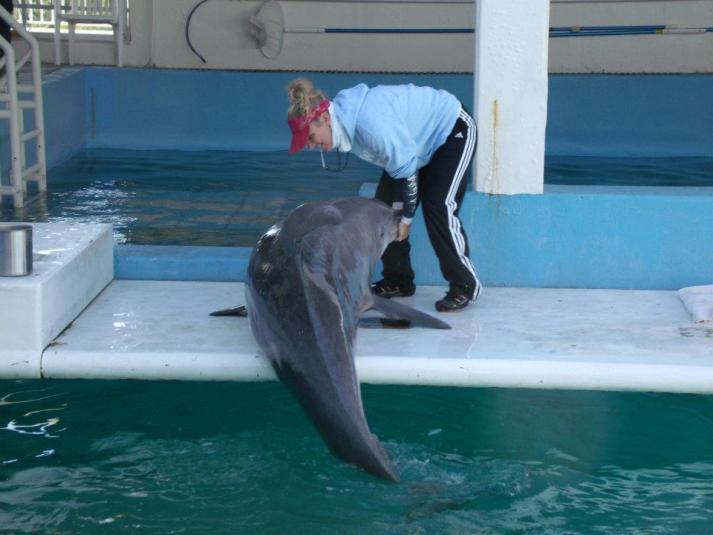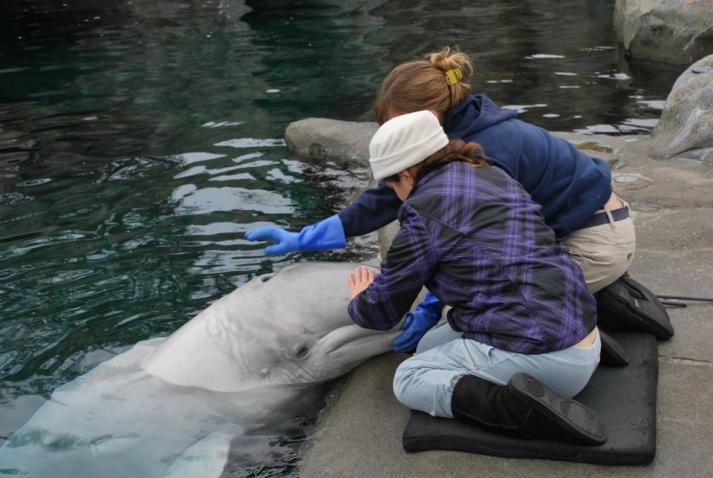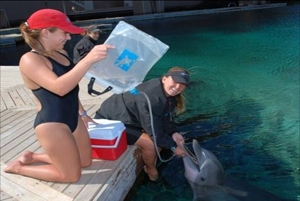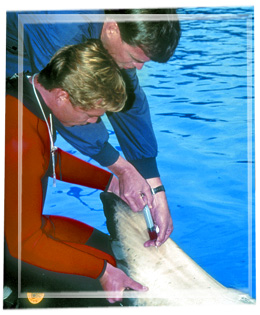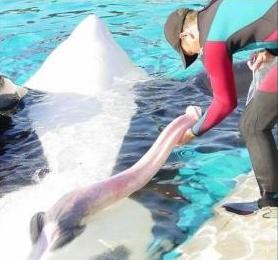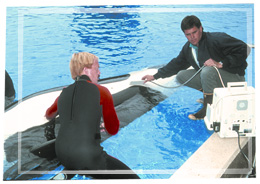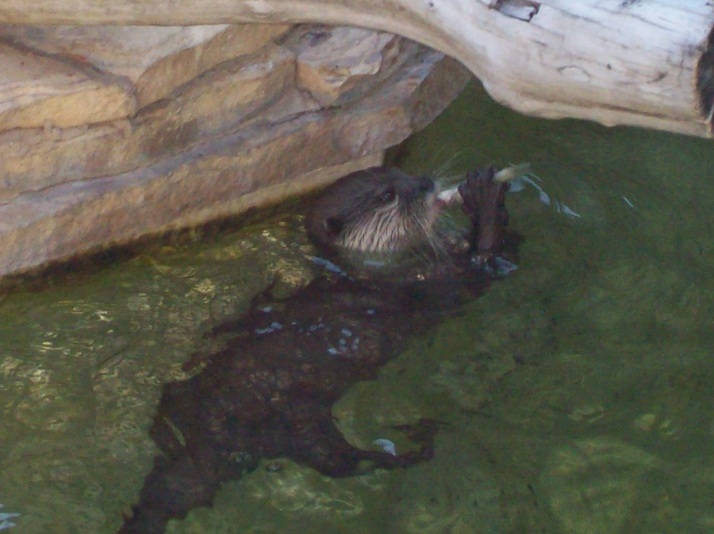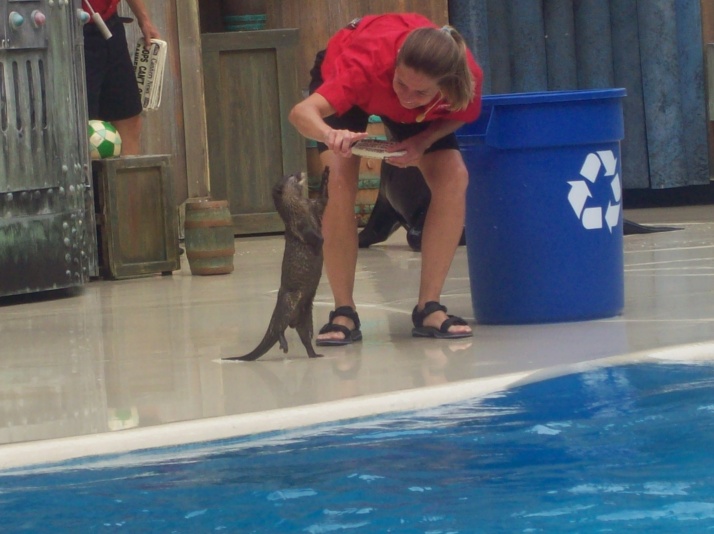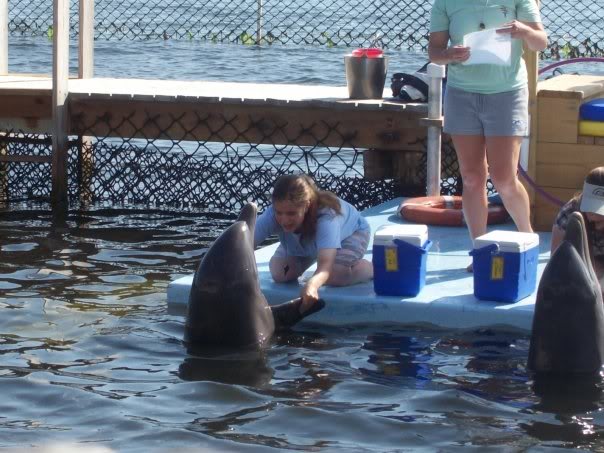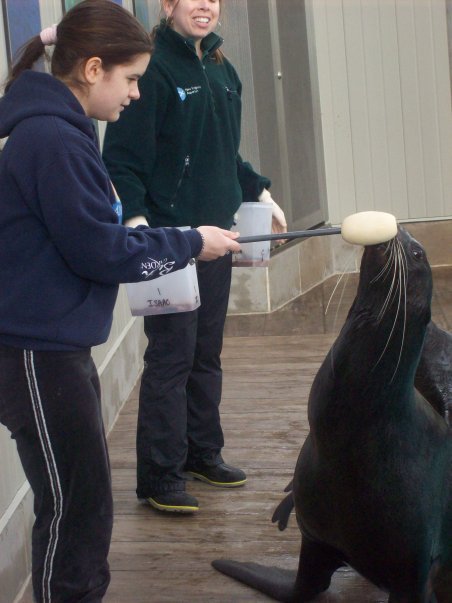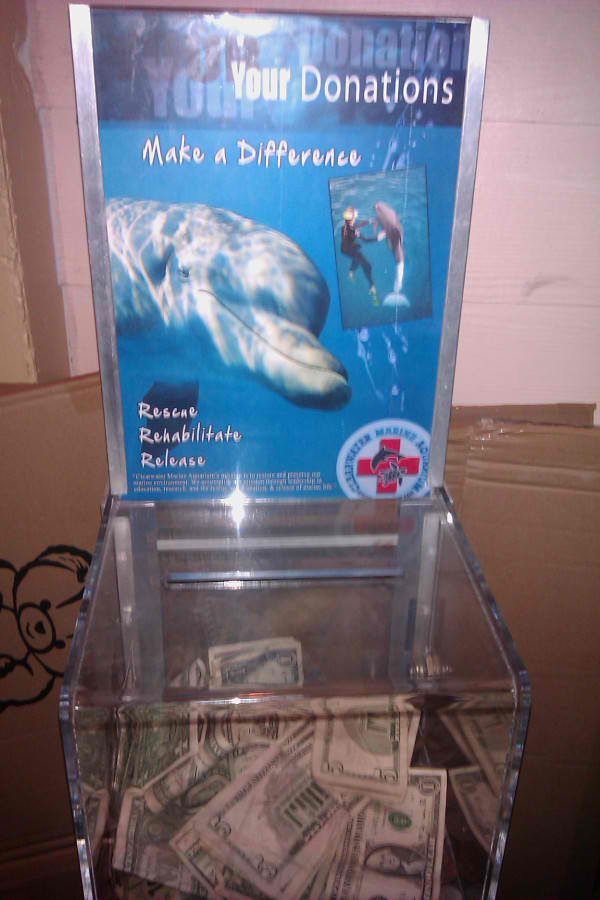
Each year, millions of children, such as Katrina Simpkins of Indiana, patronize zoos and aquariums like Clearwater Marine Aquarium. (Photo by Katrina Simpkins).
National Poll Finds Accredited Marine Parks, Aquariums and Zoos Best Places for Children to Learn About, Connect with Marine Mammals. Children have a natural curiosity about dolphins, whales and other marine mammals. The best way for parents to encourage this interest – and to inspire a lifelong passion for wildlife conservation – is to log kids off the computer and visit an accredited marine park, aquarium or zoo, where learning best happens. That’s according to a new national public opinion poll that says the public strongly believes seeing and experiencing live animals is the best way for children to learn about marine mammals. Released today by the Alliance of Marine Mammal Parks and Aquariums, the survey of more than 1,000 adults found that97 percent of people agree that marine life parks, aquariums and zoos are important because they educate children about marine mammals–animals that children might not have the opportunity to see in the wild.
Ninety-four percent of those polled agree that children are more likely to be concerned about animals if they learn about them at marine life parks, aquariums and zoos, and that visiting these facilities can inspire conservation action that can help marine mammals and their ocean environments. The poll, conducted by Harris Interactive®, also found that 94 percent of people agree that zoological parks and aquariums offer valuable information about the importance of oceans, bodies of water and the animals that live there. Parks provide important interactions that are a critical first step in promoting kids to take action to help animals and their habitats,”said Marilee Menard, executive director of the Alliance.
Additionally, the poll found that 89 percent agree that children learn more about marine mammals at an aquarium or zoo than in a school classroom, and 88 percent agree that you can learn about animals at marine parks in a way that can’t be replicated by watching film or TV programs. Some 91 percent agree that seeing a marine mammal at these facilities fosters a connection to the animal. When children – and adults – see and experience the excitement of being close to marine mammals such as whales, dolphins, and sea lions, it resonates in ways that even the most vividly illustrated book or video cannot. It is an emotionally enriching experience that fosters a sense of caring for these animals and their ocean environments,” said Menard, whose Alliance membership represents 48 accredited facilities that account for the greatest body of experience and knowledge about marine mammal care and husbandry in the world.
Other findings from the new public attitude survey include:
• 40 percent of Americans (about 125 million people) have visited a marine park, aquarium or zoo in the last 12 months, including 56 percent of households with children (about 20 million households).
• 94 percent believe the people who care for the animals at marine life parks,aquariums and zoos are committed to the welfare of the animals.
• 7 percent (ages 18-24) would be interested in swimming with dolphins.
• 93 percent believe that many of the successes to save endangered or declining species are at least in part a result of work done in marine life parks, aquariums and zoos.
90 percent agree that species in the wild benefit when their biology and physiology is studied in marine life parks, aquariums and zoos.
•90 percent believe that interacting with dolphins in a marine life park, aquarium or zoo offers people a deeper understanding and appreciation of this mammal.
We pride ourselves on providing an educational and enjoyable experience for families,” Menard said. “Professionals at Alliance member institutions work every day to inspire guests of all ages to share their commitment to marine mammals, the need to protect them in the wild and to conserve ocean habitats.”
Methodology:
Harris Interactive® conducted the study online on behalf of the Alliance of Marine Mammal Parks and Aquariums between Aug. 29 and Sept. 6, 2011 among a nationally representative quantitative survey of 1,011 U.S. adults ages 18 and over. The data were weighted where necessary to be representative of the total U.S. adult population on the basis of age, sex, race/ethnicity, education,region and household income. The propensity score weighting was also used to adjust for respondents’ propensity to be online.
The Alliance of Marine Mammal Parks and Aquariums is an international association of marine life parks, aquariums, zoos, research facilities, and professional organizations dedicated to the highest standards of care for marine mammals and to their conservation in the wild through public education, scientific study, and wildlife presentations.
A very special thanks to Lindsey Lucenta for providing this article which was written by the Alliance for Marine Mammal Parks and Aquariums. Thanks again Lindsey.
~Jenna~
